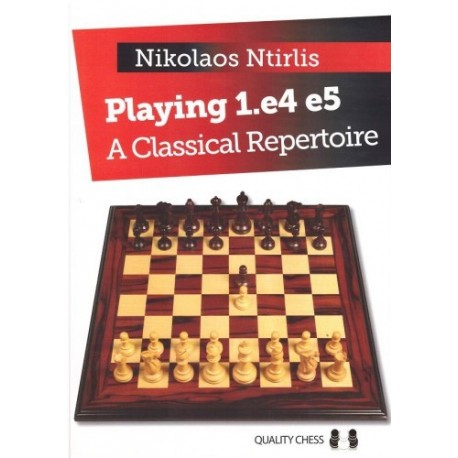No products
Playing 1.e4 e5 - A Classical Repertoire by Nikolaos Ntirlis
K-5055
New product
Every chess player needs a high-quality answer to 1.e4, and there is nothing more reliable than 1...e5. Black stakes a claim in the centre and prepares to deploy his pieces on good squares. The challenge nowadays is to build a robust repertoire without being overwhelmed by the volume of material and continual advances in opening theory.
- Write a review
Data sheet
| Year of Publication | 3 February 2016 |
| Pages | 384 |
| ISBN | 978-1-78483-014-4 |
| Hardcover | No |
| Paperback | Yes |
| Downloadable | No |
More info
In Playing 1.e4 e5 – A Classical Repertoire, Nikolaos Ntirlis offers the best of both worlds: a complete repertoire against 1.e4, built on sound positional principles, which does not require excessive memorization. Against the Spanish the author recommends the Breyer System, one of the most stable, computer-proof options at Black’s disposal. The Scotch, Italian, Four Knights and various other sidelines and gambits are handled with the same clarity and efficiency.
Nikolaos Ntirlis is an opening expert and adviser to numerous GMs. He is an avid researcher, and in this book he draws on masterly insights from chess legends such as Capablanca and Smyslov, as well as the latest analytical tools that modern technology has to offer.
Praise for the author’s previous work:
“I thought I knew a fair amount about the Tarrasch, but after reading this book, I was amazed/aghast at how much I didn’t know!” GM Matthew Sadler, New in Chess
ISBN: 978-1-78483-014-4 - 384 pages - Published 3 February 2016
Reviews






